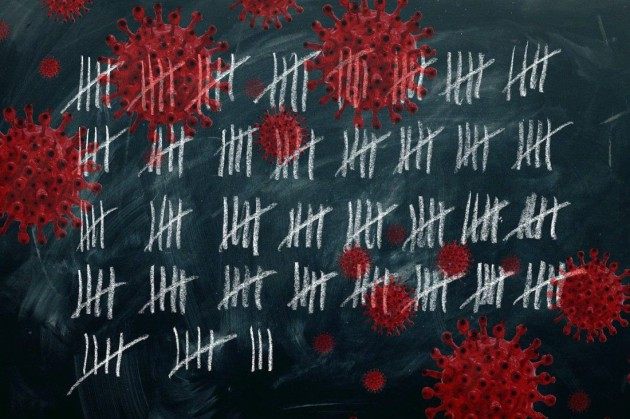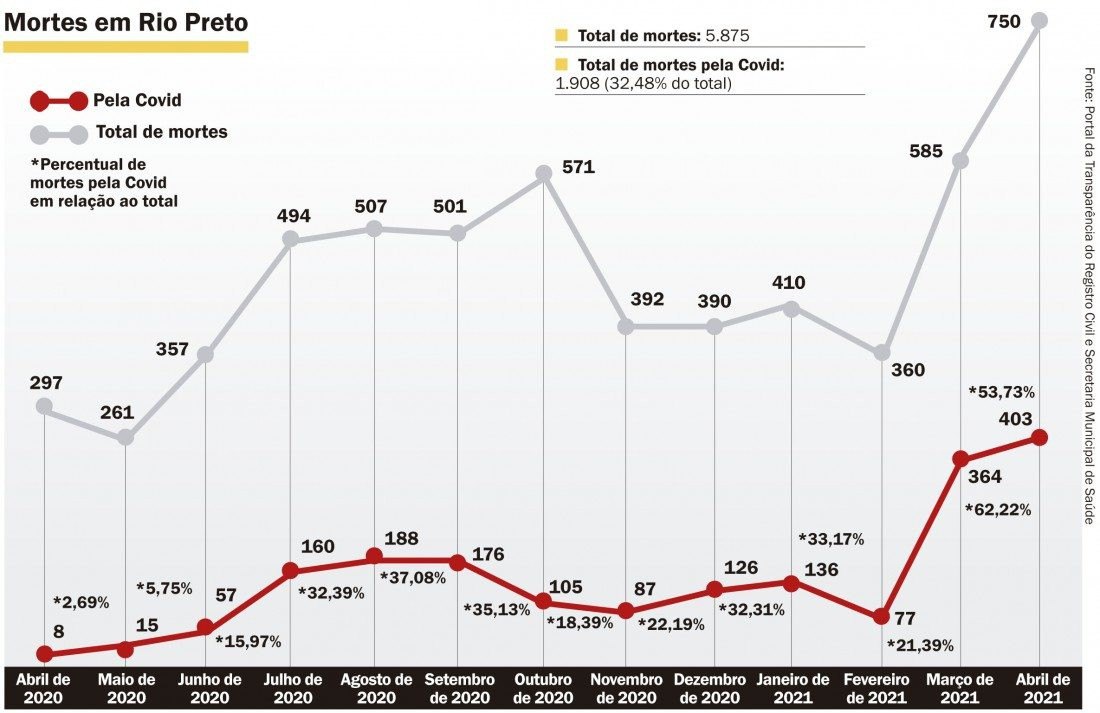“My life was Iago’s life. I am the one who bathed, the one who took, the one who brought, the one who woke up at dawn, the one who gave the medicine.” Who says this is Clyde de Oliveira Chagas, 49, mother of Iago Sousa, 13, one of the youngest people to die of Covid in Río Preto. He passed away on Thursday, the 29th, after spending nearly two weeks at Beneficência Hospital Portugal.
The boy, who leaves three siblings, including twins Igor, is part of a sad statistic in Río Preto. One in three people who died in the city last year died of Covid. This shows a survey conducted by the magazine based on the statistics of the disease and on the data recorded in the notary’s office on deaths.
Iago, who had diabetes in addition to his microcephaly, began to feel irritable in the early hours of April 12th. He had a fever, his mother treated him, the temperature had gone down, but he kept showing signs of discomfort. On Wednesday, the boy began breathing with difficulty and I took him to the health insurance emergency room. From there it was transferred to Beneficência Portugisa, where he died. “It’s tough, not being able to get close, I caught Covid too. It wasn’t hard, it’s tough. My son was everything to me, and I’m going to miss him so badly,” says Clyde, who thinks the boy contracted Covid when he went to take a chair test Moving.
“I didn’t go out with him, I took him to try his car seat, nor on the bus that went to him because he’s lumpy, and he doesn’t put him on the sidewalk anymore,” he says. She liked to take the boy to the front of the house so the wind would blow, but when they announced the arrival of the new wave, she was more violent, she stopped setting him up on the sidewalk. “It was in front of the house or in the back.” Iago is buried in the São João Battista Cemetery.
Covid is the disease that kills the most people today. According to the Ministry of Health, 2.8% of diagnosed patients die, which is a high number when considering the high transmissibility that leads to a large number of cases. According to the Department of Informatics SUS (Datasus), from April of last year to February of this year, 188 residents of Rio Preto died in the public health system given all types of tumors, 22 due to a stroke (stroke), and 28 due to the heart. Infarction and 29 due to generalized infection. Through Covid, from April of last year to April of this year, he took 1,908 lives.
Although declining, the moving average for coronavirus deaths (the number of occurrences recorded in the past week divided by seven) remains high: there are ten cases per day, that is, a 50% drop in the last 30 days, since the lockdown In Rio Preto he reached the end. The moving average for mild cases also decreased – at an average of 137 per day – as well as the rate of severe cases decreased (there are 24 hospitalizations per day). This Friday, 30 cases were confirmed, in addition to 310 cases and six deaths from the disease. The occupancy rate of ICU beds in the city remains high: 85% of them are full.
Rio Preto Minister of Health, Aldenis Purim, indicated during the live broadcast on Friday that it is essential to maintain all care. The transmission rate showed an upward trend with respect to the last measurement. The ideal is for it to remain less than one until the epidemic begins to stop, and is at 0.991 – slightly more than the 0.986 index recorded in the first two weeks. “Activities are returning, if there is no mass vaccination, the tendency of cases is to return. It is necessary to maintain the distance, if not with absolute certainty, we will have an increase in cases,” the doctor said.
João Pessoa Araújo Junior, professor at the Institute of Biological Sciences at Estadual Paulista University (Unesp) and vice president of the Brazilian Society of Virology, points out that predicting what will happen in the coming weeks is difficult because it involves many factors. He says there’s a drop, yeah, but it’s still at a very high level.
Factors that contribute to reducing vaccination are vaccination, albeit at a slow pace, and the fact that many people have already contracted the disease, so even if the infection does not give complete immunity, the trend is to reduce dangerous cases. “There is no way to predict that we will maintain this high level, but it is possible that the behavior has not changed much, although we have restricted activities during the emergency phase,” the expert notes.

“Wannabe internet buff. Future teen idol. Hardcore zombie guru. Gamer. Avid creator. Entrepreneur. Bacon ninja.”



